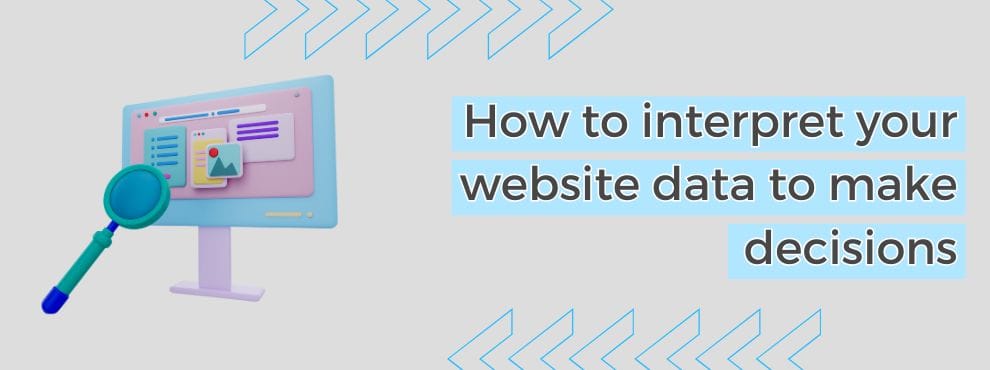Data analysis has become an essential tool for any business operating online. Whether you run an online store, a service page or a blog, your website data provides a window into how users interact with your content, what areas need improvement and where opportunities for growth lie. However, interpreting this data can seem daunting if you have no prior experience. In this article, from IDX Innovadeluxe, we will guide you step-by-step to better understand the information your website collects and how you can use it to make informed and strategic decisions.
Table of contents
The importance of data in the management of your website
Data is not just numbers; it’s stories about your users’ behavior. From how many visitors land on your page to how long they spend browsing, each metric has a purpose. The key is to understand how these numbers relate to your business goals.
For example, if you notice that a large percentage of users leave your site within seconds, this could indicate design issues, long load times or unattractive content. On the other hand, if a specific page has high traffic but low conversions, it may be a sign that you need to optimize the call to action or improve the content to make it more persuasive.
Understanding the importance of data is not just about solving problems, but also about identifying what is working well and replicating it in other areas.
Key metrics to monitor
To correctly interpret your website data, you must first know what the key metrics are. Not all numbers are equally relevant for every type of business. However, these are some of the most common ones:
- Number of visits and unique visitors: This indicates how many people are coming to your site and whether you are attracting a new or returning audience.
- Bounce rate: This measures the percentage of visitors who leave your site after viewing only one section. A high rate can be an indicator of content or design problems.
- Time on site: Reflects how much time users spend exploring your content. A high time on site generally indicates that they are interested in what you offer.
- Conversions: Whether it’s a sale, a subscription or a download, this is the ultimate goal for most websites.
- Traffic origin: Knowing whether your visitors come through social media, search engines, email marketing or directly can help you focus your efforts on the most effective strategies.
By monitoring these metrics regularly, you can establish patterns and detect important changes that need immediate attention.
Identify trends and detect problems
Once you have access to the data, the next step is to identify patterns and trends. Does your site traffic increase or decrease during certain seasons? Are there specific days or times when you get more visitors? These insights can help you better plan your marketing strategies.
On the other hand, it is also important to use data to detect problems. Let’s say your conversion rate is low on mobile devices. This could indicate that your site is not optimized for this type of user, which represents an opportunity to improve the design and increase sales.
Another common problem is a high percentage of abandoned carts in an online store. By analyzing the data, you might discover that shipping fees or a complicated checkout process are driving your potential customers away. The key is to investigate thoroughly and make adjustments based on facts, not assumptions.
The relationship between data and your business objectives
Your website data should always be aligned with your business objectives. For example, if your primary goal is to increase sales, you should focus on conversion-related metrics, such as most-visited product pages and the effectiveness of ad campaigns.
If, on the other hand, your goal is to position yourself as an authority in your industry, the time users spend reading your articles or social media interactions might be more relevant.
The secret is to prioritize the metrics that have the most impact on the success of your business and focus on improving those specific areas. Remember that you don’t need to analyze every piece of data available; less is more when you know what to look for.
Make data-driven decisions
Finally, interpreting data is useless if you don’t take action. Once you identify trends or problems, it’s time to implement changes and measure the results.
For example, if you find that your organic traffic has decreased, you can review your SEO strategy and focus on highly relevant keywords. If conversions are not as expected, you could experiment with different designs for your landing pages or improve the quality of your product images and descriptions.
Don’t be afraid to try new things. Sometimes small changes, such as modifying the color of a “buy” button, can have a significant impact. Just be sure to make these changes in a controlled way and measure the results to see if they are really working.
Conclusion
From understanding what metrics to monitor to learning how to spot trends and problems, data is the bridge between what your website is achieving and what it could achieve. At IDX Innovadeluxe, we know that every decision counts and that knowledge is power. Start analyzing your data today and turn it into the engine of your growth. Ready to take the next step?




Deja un comentario